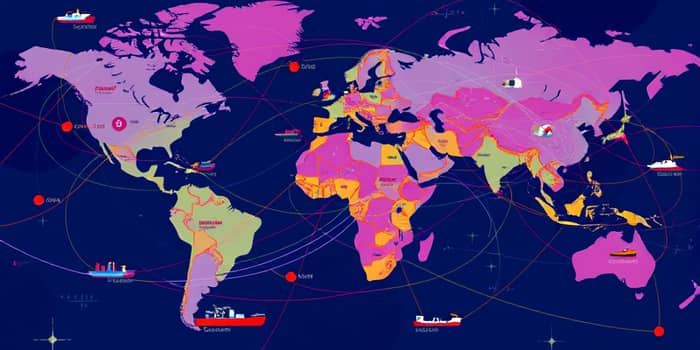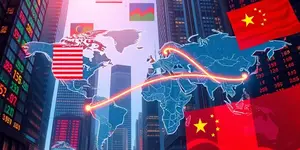
Global trade in 2025 stands at a crossroads, buffeted by rising tariffs, renegotiated agreements, and mounting uncertainty. Nations large and small are grappling with volatile policy environments and shifting alliances as they seek to protect industries and maintain economic momentum.
From North America’s plunging exports to emerging blocs forging new partnerships, the contours of commerce are being redrawn. This article explores the data, case studies, and strategic pathways that will shape the future of cross-border exchange.
The latest forecasts signal a modest contraction in merchandise trade of 0.2% for 2025, a stark reversal from pre-pandemic trends. North America faces an especially severe hit, with exports set to decline by 12.6%. Meanwhile, services trade growth has been downgraded to 4.0% amid weakening demand and heightened protectionism.
International bodies such as the WTO and the World Economic Forum warn of damaged market confidence and policy volatility that could tip vulnerable economies into deeper distress. Export-dependent industries in least-developed countries risk losing ground, exacerbating inequality and stunting growth.
Tariff rates have surged across key economies, triggering tit-for-tat retaliations and frontloading imports before tariff implementation. The United States, China, and the EU have all imposed new barriers, driving trade policy uncertainty to record highs in mid-2025.
Businesses are recalibrating supply chains, delaying investment, and exploring alternative markets. Purchasing Managers’ Indexes show contracting new export orders in over two-thirds of reporting nations, while global goods import volume growth slid from 6.7% in March to just 2.9% in April.
Despite headwinds, multilateral and regional pacts are proliferating. Seven new agreements were notified to the WTO in 2024, up from four the previous year. Major milestones include the inclusion of the UK in the CPTPP and the expansion of AfCFTA membership.
These pacts promise to lower barriers, harmonize standards, and foster deeper integration. Yet the benefits hinge on timely implementation and genuine market access, not just political declarations.
Advanced economies have imposed approximately 70% of new trade barriers since 2022, though their average tariff levels remain lower than those in emerging markets. This divergence poses distinct challenges:
Latin American exporters, notably in Argentina and Brazil, have seen merchandise shipments fall by 3.6%. In contrast, Korea’s semiconductor exports soared 7.1%, showcasing sector-specific resilience.
If current tensions ease and pending agreements take effect, global trade could rebound to 2.7% growth in 2026. However, sustained recovery depends on coordinated policy action and structural reforms.
Key steps for stakeholders include:
International institutions have called for renewed cooperation. The WTO emphasizes the need for stable rules, while the OECD and World Bank urge investment in infrastructure to cushion against future shocks.
Ultimately, the shifting sands of global trade pacts reflect a world in flux. Nations that embrace flexibility, foster partnerships, and prioritize open markets will be best positioned to harness the benefits of cross-border commerce in an increasingly unpredictable environment.
References













